Summer is here and for many of us that means more time spent outside with young ones. This can create the perfect scenario for tree and forest-themed activities.
As a bonus, time outdoors can boost kids’ confidence, happiness, and focus, all by getting them up and moving and activating their senses. Studies have shown that spending time in nature can also spark a lifelong appreciation for the environment. And as any parent or caregiver knows, simply playing together outside can bring us closer together.
Outdoor activities don’t have to be educational or super structured (the less structured the better!). The next time you and the little ones in your life visit a National Forest or local park, take a neighborhood walk, or even hang out in a backyard, try out the activities below. For all the adults without kids, unleash your inner child and have some quality outdoor playtime!
Take a Sensory Stroll
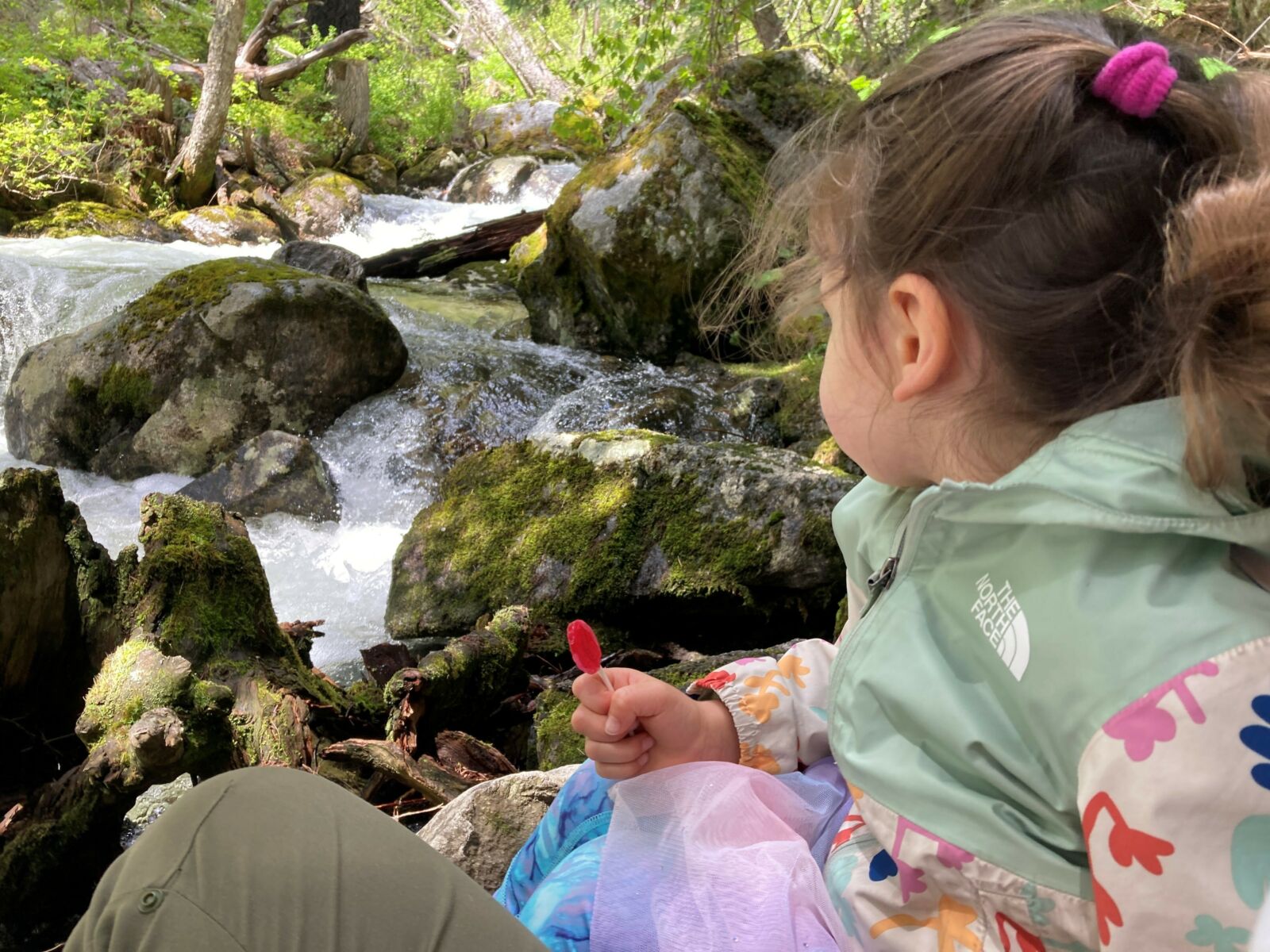
This activity uses our senses and encourages kids to notice and connect with their surroundings. Before you begin, talk about what you might see, hear, smell, and touch (if there will be safe foraging or snacks, add in taste!) on your sensory stroll.
Once you’ve reached the destination, start by drawing the child’s attention to the ground. How does it feel under them? Reach down and touch it if you need to. Is it rough and hot, or soft and cool? Then focus on hearing, listening for different sounds, near and far. Continue with smell and sight, pausing every now and then to find new items to sense on your journey. Let the child set the pace.
For very young children, it may be best to focus on one sense, such as hearing. Encourage them to mimic what they hear.
Observation Journal
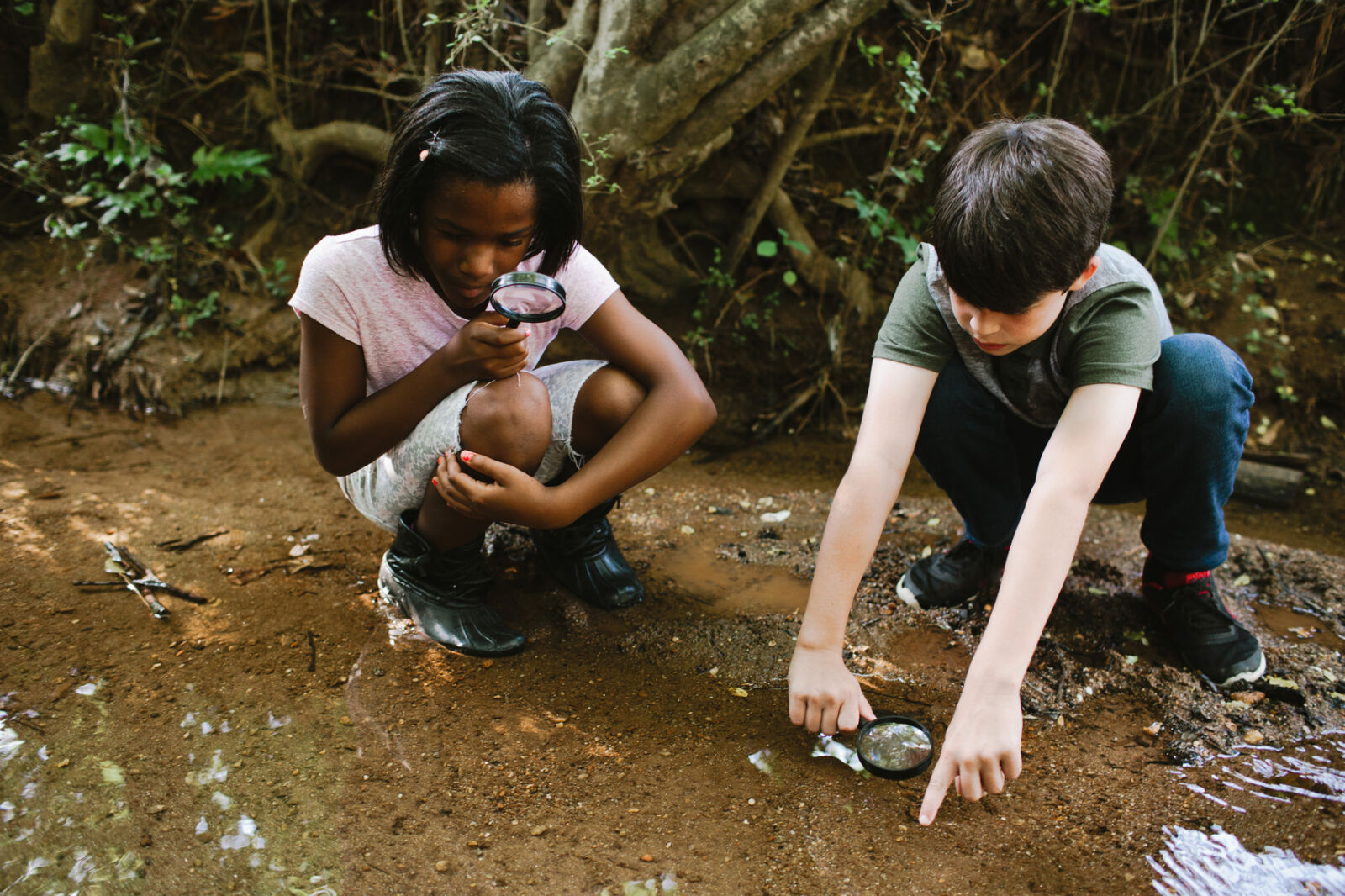
Photo by Erin Drago.
Bring sketchpads and colored pencils or crayons on your outing (a magnifying glass may also be helpful) and ask kids to draw or write about the natural items they observe. You can start right away or on a break once they’ve spotted something interesting. If possible, break down the item further by inspecting it up close, such as helping to find and draw the different parts of a flower.
Sensory activities like this one and the stroll above can help increase awareness and focus. To engage in this activity more at home, learn about the items you and the children observed online or in a book and talk about them together. For instance, if a child drew a plant, learn its name, range, and what eats it.
Forest Bingo Scavenger Hunt
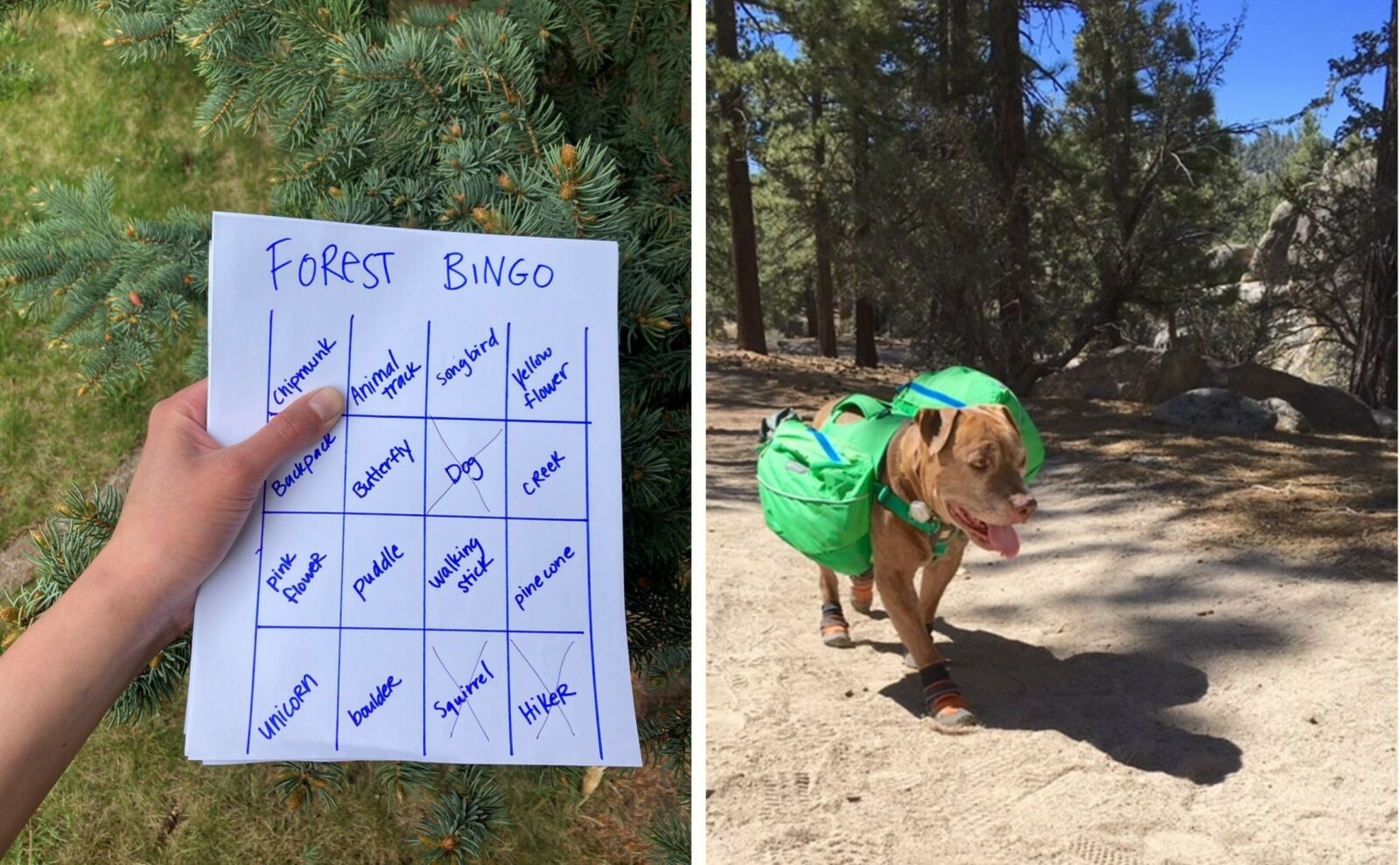
Right photo by Leslie Rith Najarian.
Create a list with your child of all the items you can imagine seeing on your visit. Then create your own bingo boards on paper or cardboard, drawing in the items or writing by name. For example, your bingo board could include items such as a chipmunk, woodpecker, butterfly, clover, pinecone, muddy puddle, dog, and more. Remember to make all the boards different so no two are alike. Mark the items off with a pen or sticker as you come across them on your visit, getting “Bingo” on marked rows or entire boards.
If you have a very young child with a wild imagination, try incorporating an unlikely or mythical item on the board, making sure to only incorporate one per board. (Or go ahead and hide a sparkled unicorn figurine behind a bush!)
Leaf Art
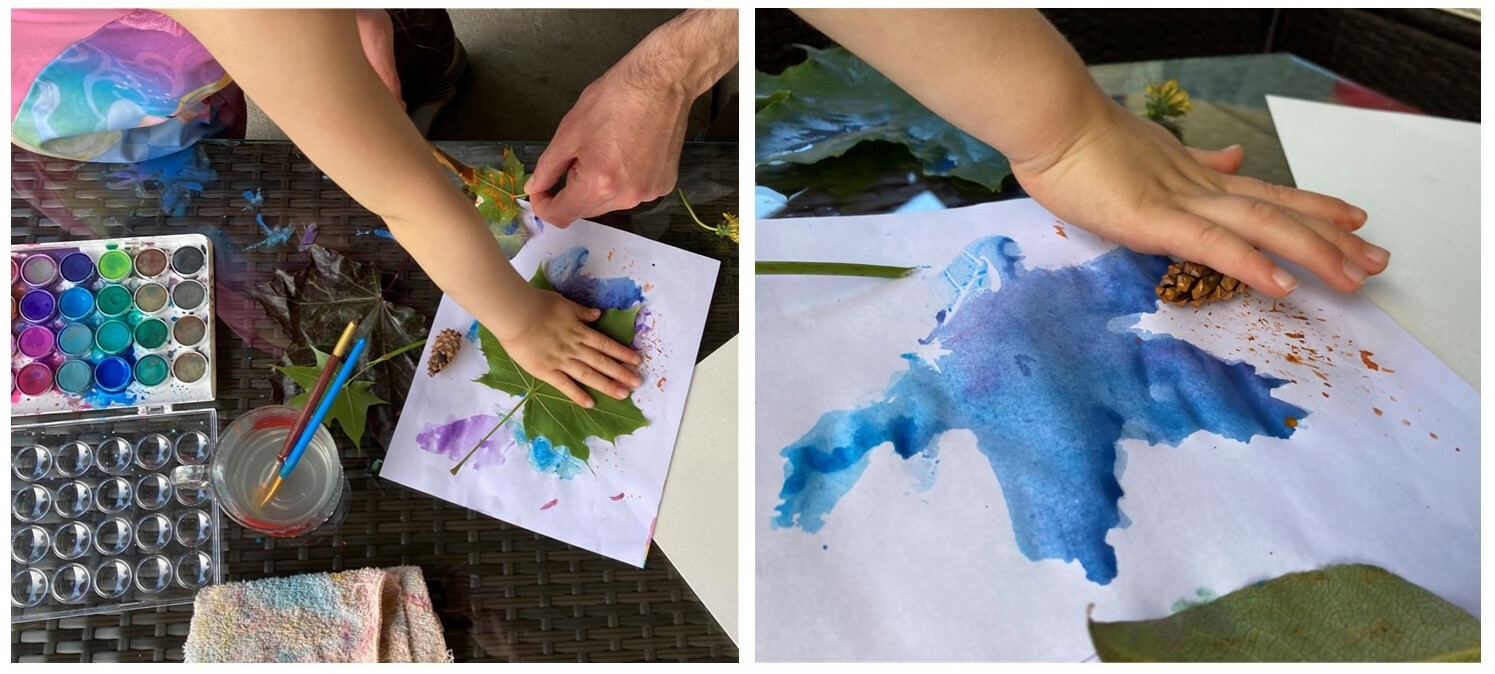
Leaf prints: Watercolors can work as well (especially if you don’t have tempura paint at home, like the author!). Try other natural items, such as pinecones and dandelions, for more unique painting patterns.
These activities will happen at home after your visit. While on your outing, collect several types of leaves for leaf-art projects. There are likely more than a thousand crafts to do with leaves, below are a few ideas to get started. All you will need are leaves, paper, tempura paint, tape, crayons, and glue to do all three projects.
- Painted Leaf Prints: With tempura paint, paint a leaf with a brush or dip it in a paint covered plate. Then push the leaf paint-side down onto craft paper or another intended surface. Keep going with more leaves and colors.
- Crayon Leaf Rubbing: On a table, tape a few leaves to a blank sheet of white paper. Then turn the paper over so the leaf side is against the table. Then shade the hidden leaf with the side of a paper-free crayon.
- Leaf Collage: Glue leaves or other found parts of trees (e.g., twigs, seed pods) to make unique collages. Design animals, houses, or whatever appeals to your little one in the moment.
Throughout any of the projects, you can talk about the kinds of trees the leaves are from, where they are found, and point out the distinguishing features of the leaves (e.g., serrations, fuzzy vs smooth, shiny vs matte).
Climb a Tree
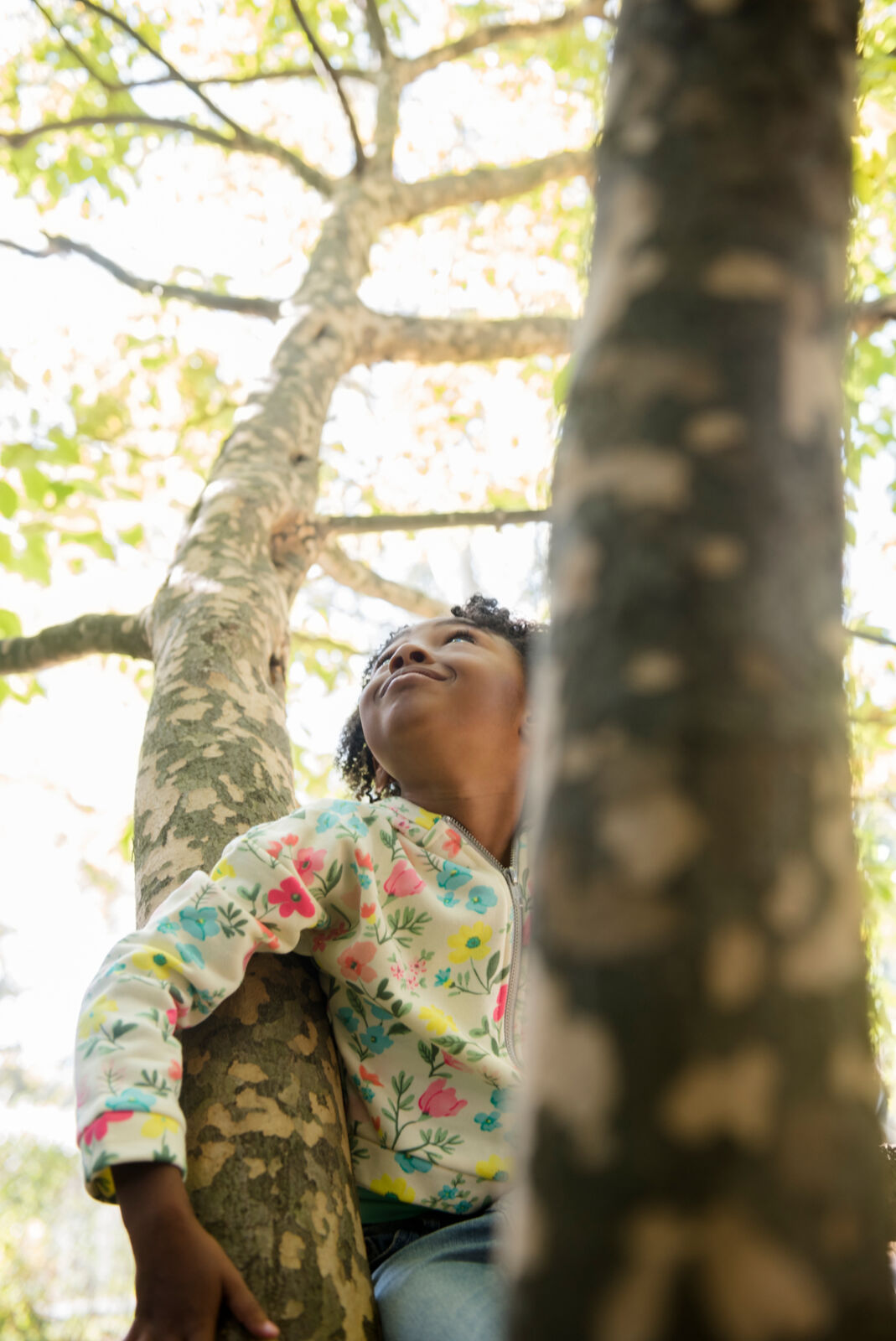
Photo by Jamie Grill Atlas.
Sometimes the simplest things are the best. You know what to do, no further instructions necessary.
Plant a Tree in Your Community
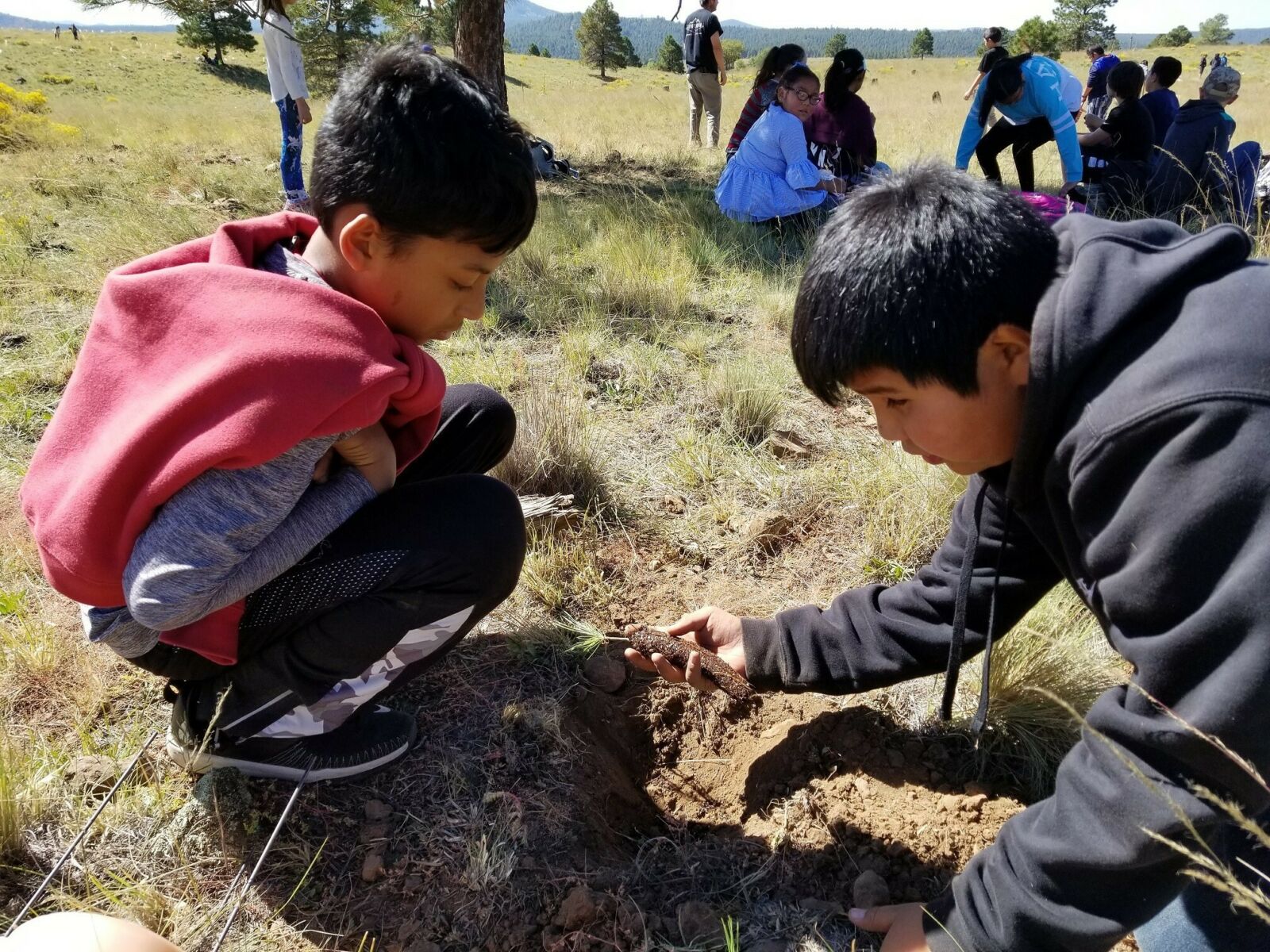
Photo by the U.S. Forest Service.
While it is rather difficult for individuals to plant trees on National Forests (our projects are very large and carried out by professionals for increased survivability), there may be other types of planting events to join in your community. Visit this blog post for tips and more ideas on how to plant trees locally.
Participate in Our National Forest Week Photo Contest
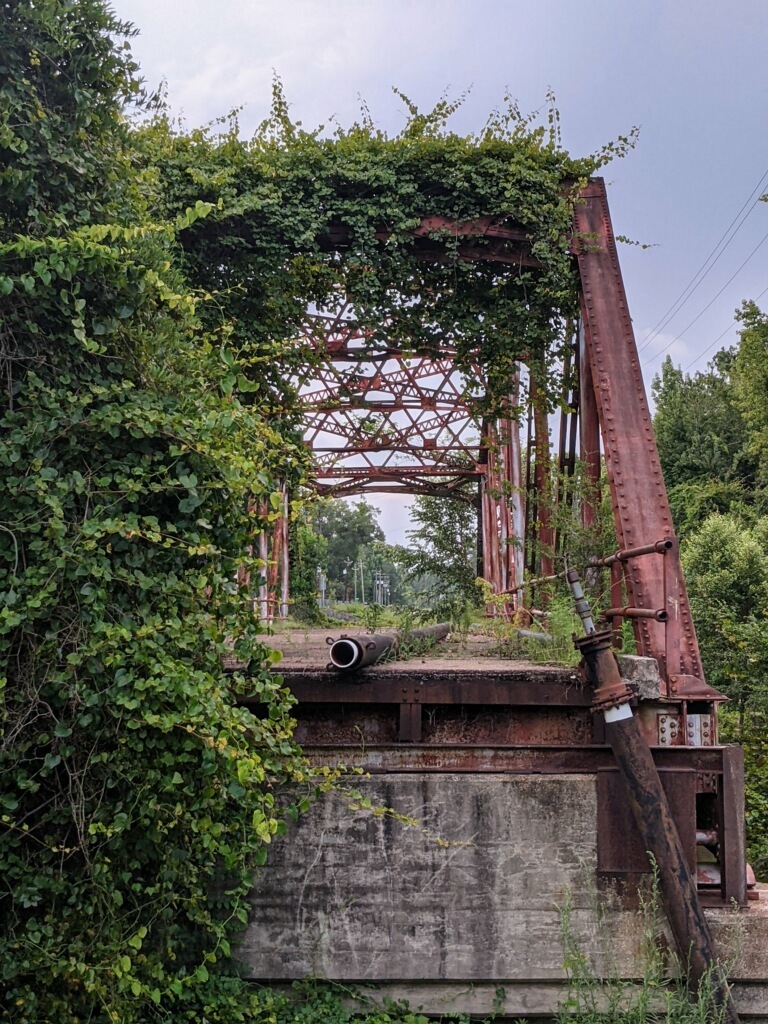
2021 NFW Photo Submitted for Youth Category by Leah Conard.
Head to the closest National Forest and snap some photos to compete in our annual National Forest Week Photo Contest. Submissions can include landscapes, wildlife, water - anything that catches your young one’s eye on a National Forest.
See our National Forest Week Photo Contest page for the official rules and more.
And for a Rainy Day, Color Our Tree Planting Coloring Pages
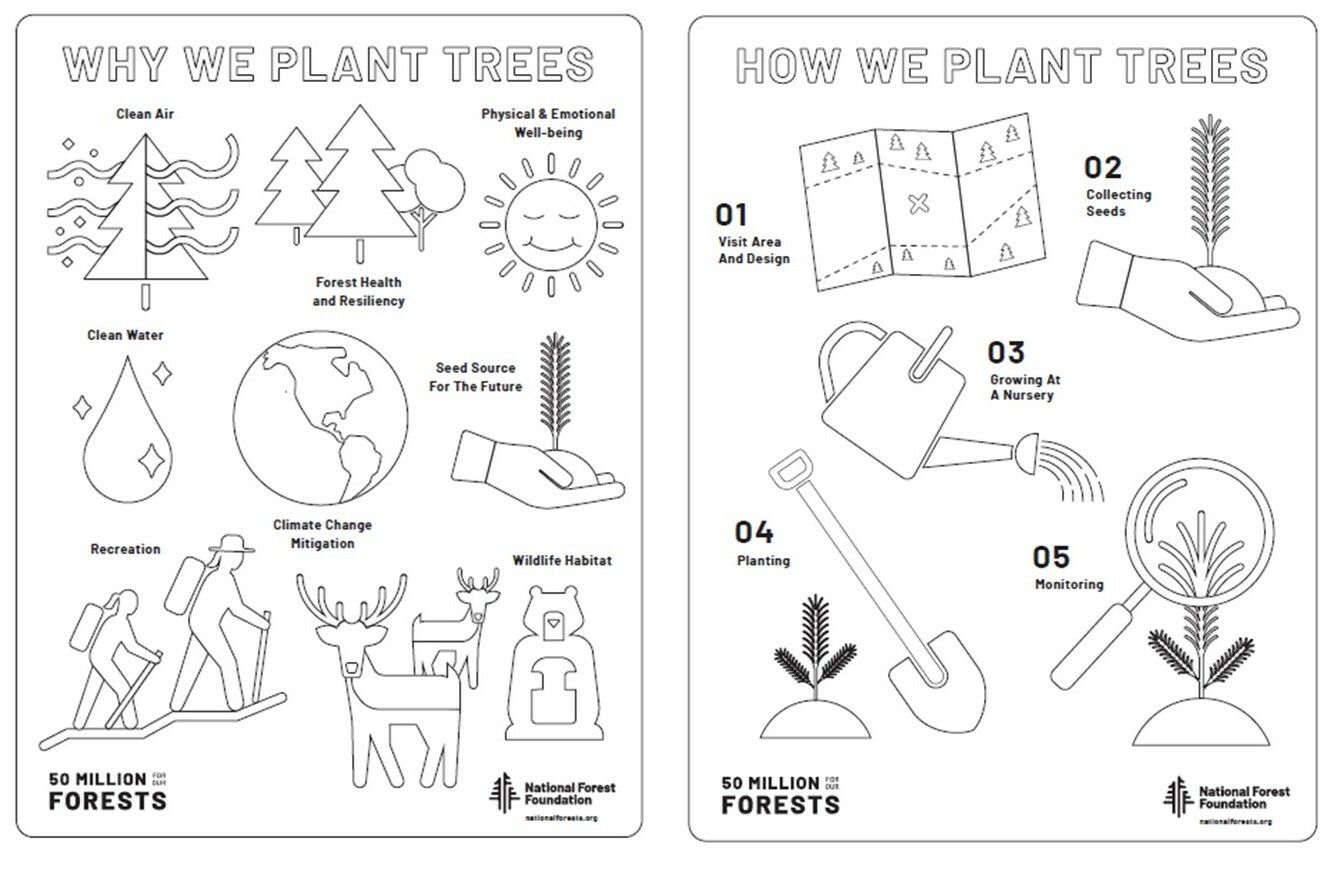
This one can happen fully indoors. Our reforestation coloring pages touch on how and why we plant trees on National Forests. To add an educational element, learn about the benefits of planting trees and the work behind reforestation on our website.
Enjoy these activities with the children in your life and help pass along your appreciation for trees and forests to the next generation.
Cover photo by iStock.com/Wavebreakmedia.
--------
Did this blog get your adrenaline going for some National Forest adventure experiences? We hope so! Your support is crucial to ensuring the National Forest Foundation can complete dozens of projects each year that keep the adventure coming. Please click here to make a much-needed unrestricted gift today. And, happy (safe) adventuring!

